

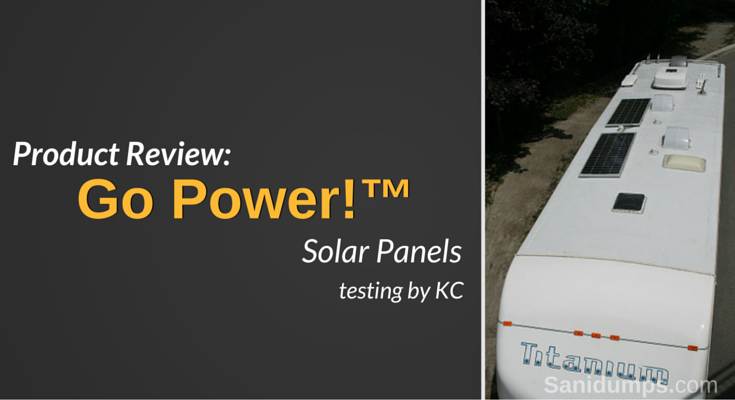
Are you always turning lights off to conserve power? Do you run out of power when boon docking or dry camping? Have your fellow RVers complained about your noisy generator? If so, we have a solution.
Our camping involves not hooking up to shore power 80-90% of the time so power management even with four 6 volt golf cart batteries is a challenge. The problem can be exacerbated by the cold climbs of Canada where it gets dark early and nights can get cold in early spring and late fall. In my investigation to address this issue I came up with following potential solutions:
LED: I was really surprised at the overall cost of replacing all lighting with LEDs. The complete replacement would run in access of $900.00! In addition, it would only address one of the power loads.
Generator: I did purchase a Honda generator. It solved many of the power issues, but I discovered some shortcomings too. Even Hondas are not as quiet as I would prefer (especially in Provincial and State Parks). Also, they have tendency to "grow feet and disappear". But the generator is very handy to charge my battery bank. In my case I have a multi-stage converter (Progressive 9145 with wizard) but it can only bulk charge at 45 amps (540 watts) even though the generator puts out more than 1620 watts. Lastly, it takes too long to charge the last 10% of the batteries due to the stepping down the voltage by the converter to protect the batteries from boiling over. This meant that the batteries never got fully charged. This reduces the number of battery life cycles, and it required frequent charges after initial draw down.

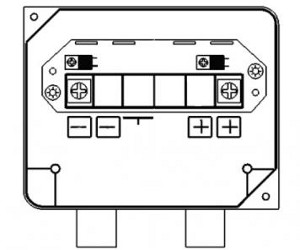
Connector Block on Solar Panel
Solar: I was pleasantly surprised by the cost of solar panels and solar regulator over the last year or so, probably due to all the competition. While at a trade show in Abbottsford, BC, I spoke with the Go Power!™ team, about the installation and my concerns regarding drilling holes in my rubber roof, they showed me how easy it was and provided a complete kit that included all the brackets, wiring, 2 solar panels (totalling 225 watts) and a 25 amp charge solar digital regulator (GP-PWM-25) and an installation video.
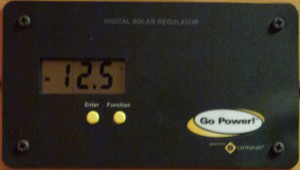
I also found out that solar power works great in topping up the last 10% of the batteries which increases stored power and maximizes battery life cycle. A quick power usage calculation also outlined that on most days (especially when we did not require the use of the furnace) the batteries remained at full charge. It worked extremely well with the generator as it provided the bulk charge while solar provided the trickle charge to top the batteries. This meant that my generator was running less than one hour every 5-7 days or so (depending on TV watching, furnace running and microwave use).
Camp Less: Not an option!
I selected the generator and solar power option.
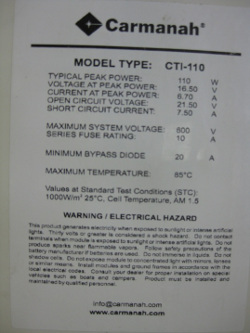
The first step is planning for the location of the solar panels and the cable path to get the cables to the batteries. Since I am keeping my option open to add additional panels in the future, I want to make sure that I plan for this potential expansion now. One of the easiest ways to do this is to cut the box of the panel to the size of the panels. In my case I had four mock cardboard pieces plus the two panels for this planning step. I laid the templates and the panels so that my cabling was efficient, I would still be able to walk and clean the roof, and it did not interfere with the TV antenna, roof vents or the air conditioner unit. I made sure the panels attached to slightly different roof angles to maximize my sun exposure when parked. Since my batteries are in the basement of my 5th wheel, I decided to use the gray tank vent pipe entrance to drop my cables. Instead of mounting the regulator into the wall I decide to make a raised panel similar to the ones for my inverter controls.
The supplied YouTube video below has an excellent narrative on the installation. I will focus more on the planning process and the differences in installation due to my rig's layout. I did use the rubber expansion mountings supplied (they worked well for me). The panels already had a quick connect, so I did not have to wire in the panels. I added a battery cut off switch between the regulator and the batteries and direct connected to the battery bank. The cut-off switch allows me the flexibility of working on my electrical system without getting unpleasantly surprised with sudden power from the solar panels. The whole installation took 4 hours including the planning and fishing the wires. Make sure you have help to lift the panels onto the roof (my 5th wheel is close to 13 feet high, and it is hard to climb holding a panel in one hand and the ladder in the other).
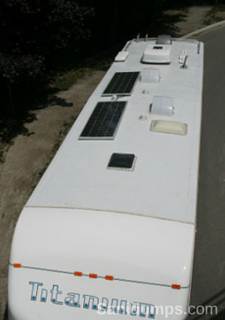
I have to say I have become a big believer in solar power for RVs as there have been few very pleasant surprises that I was not aware over above the cost comparison with LED lighting, extending the number of battery life cycles and getting a deeper charge when used in conjunction with a generator.
In 2010, we made a 6-week trip from British Columbia to Colorado during one of the hottest summers that I can remember travelling in. We were very worried about keeping the fridge cold during the long drive in that heat. Normally we would turn the fridge on propane every time we stopped for breaks or lunch and then have to remember to shut it off before we re-started our journey. This time I tried running the fridge on batteries through my Inverter. Much to my surprise our batteries were fully charged when we stopped for the day and our fridge remained nice and cold. No more "propane shuffle" (turning it on and off). Also, we did not use the generator during the entire trip (even though we carried it just in case). On later trips lasting a week to ten days, my generator stayed at home, one less thing to pack and manage.
On one of our late fall camping trip we did use the generator twice in a week (due to cold weather, running the furnace as well as running the satellite system and TV. We even did a movie marathon through breakfast, lunch, supper, happy hour and a midnight snack. This is when we noticed that we could get a much deeper charge with the combination of solar and generator.
When combined with proper power storage (battery capacity), a powerful charger, an appropriately sized pure sine inverter, the benefits of solar become even more evident. Currently, I have a 400 watt pure sine inverter (Xantrex RS400) for my audio/video equipment and an 1800 watt pure sine inverter (Xantrex XM1800Pro) for all other loads, and it has limitations so my next project is to find a better 2000+ watts pure sine inverter or a combination charger/inverter/transfer switch such as a Magnum MS2012 to enhance our boon docking even more than it will simplify as:
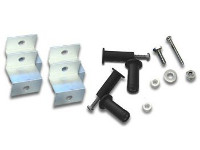
We believe in taking your lifestyle with you when you RV and solar has been another huge enabler. Solar provided many more options to power management then I had originally imagined or read about.
I can see additional solar panels in our future for sure.
Go Power!™ by Carmanah Technologies
250 Bay Street,
Victoria, British Columbia,
Canada, V9A 3K5
Toll-free: 1.866.247.6527
Fax: 1.866.607.6527
Email sales: sales@gpelectric.com
Website: gpelectric.com
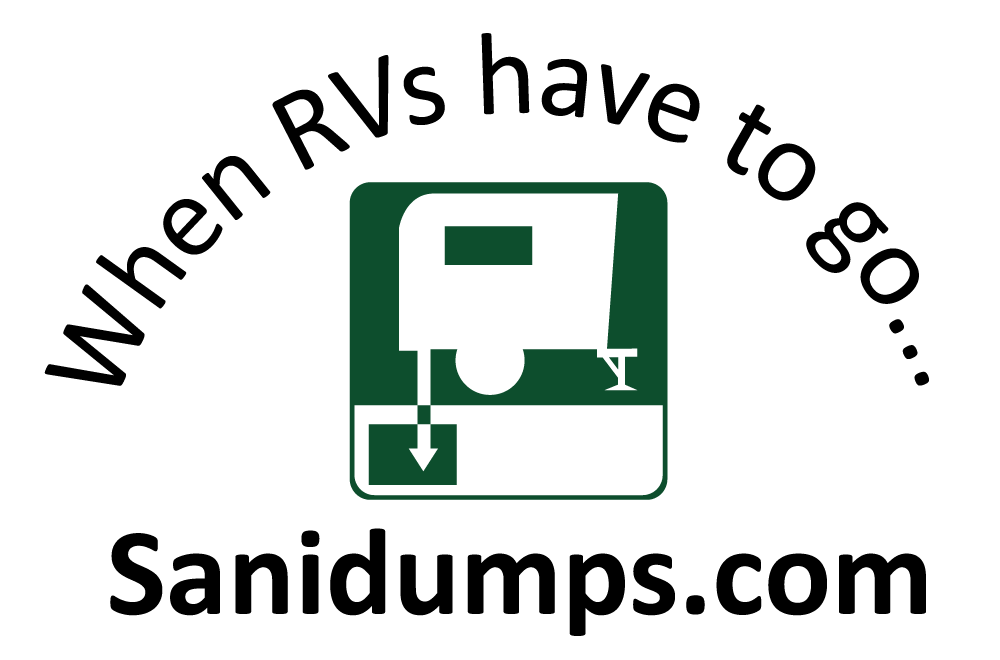
National Day Calendar
✔ Mark your calendar,
June 7 is
National RV Day,
Let's go RVing!
The type of recreational vehicle dump stations you will find on Sanidumps.com include: private, public, RV park, non-park, municipal, truck stop, rest stop, campground, camping, resort, commercial, pay, donation, waste disposal, and free.
It is important to dispose of human waste properly when RVing. The RV dump station, dump point, or sanidump station you choose to empty your gray and black water holding tanks is up to you; we're hoping that you will choose an approved dump station site that's green and environmentally friendly, using an environmentally sound method.
Do you need to know where to dump your holding tanks when your RV is on the road? Now you can know where the RV dump Stations are while traveling with a e-book. More information about the RV Dump Station location e-book.
Although efforts are made to make sure of the accuracy of the information presented, Sanidumps.com shall have neither liability nor responsibility to any person or entity with respect to any loss or damage caused, or alleged to be caused, directly or indirectly by the information contained here.
Sanidumps.com is not affiliated in any way with any place/location listed on this site. Fees are subject to change; availability and prices can and do change.
We thank all the RVers that have contributed information :-)
The Sanidumps.com Team
Serving the RV community for over 18 years
Sanidumps.com - When RVs have to go...™
© 2006 - 2024 Sanidumps.com - All rights reserved.
The content contained on this website may be used for personal reference only and may not be reproduced in any form without prior written consent permission from Sanidumps.com
Australia, Canada, Mexico, New Zealand, United States & more...